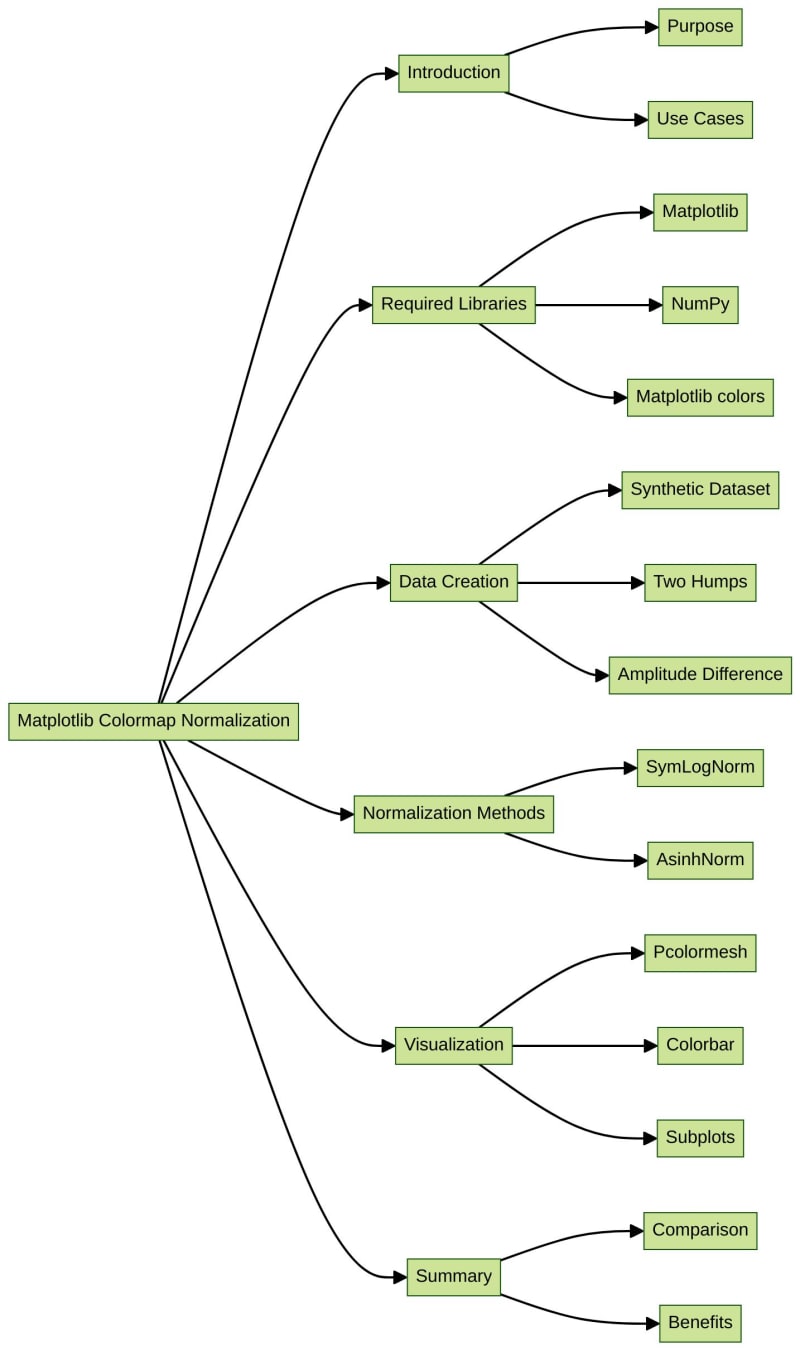This content originally appeared on DEV Community and was authored by Labby
Introduction
In data visualization, colormaps are used to represent numerical data through color. However, sometimes the data distribution may be nonlinear, which can make it difficult to discern the details of the data. In such cases, colormap normalization can be used to map colormaps onto data in nonlinear ways to help visualize the data more accurately. Matplotlib provides several normalization methods, including SymLogNorm and AsinhNorm, which can be used to normalize colormaps. This lab will demonstrate how to use SymLogNorm and AsinhNorm to map colormaps onto nonlinear data.
VM Tips
After the VM startup is done, click the top left corner to switch to the Notebook tab to access Jupyter Notebook for practice.
Sometimes, you may need to wait a few seconds for Jupyter Notebook to finish loading. The validation of operations cannot be automated because of limitations in Jupyter Notebook.
If you face issues during learning, feel free to ask Labby. Provide feedback after the session, and we will promptly resolve the problem for you.
Import Required Libraries
In this step, we will import the necessary libraries, including Matplotlib, NumPy, and Matplotlib colors.
import matplotlib.pyplot as plt
import numpy as np
import matplotlib.colors as colors
Create Synthetic Data
In this step, we will create a synthetic dataset consisting of two humps, one negative and one positive, with the positive hump having an amplitude eight times greater than the negative hump. We will then apply SymLogNorm to visualize the data.
def rbf(x, y):
return 1.0 / (1 + 5 * ((x ** 2) + (y ** 2)))
N = 200
gain = 8
X, Y = np.mgrid[-3:3:complex(0, N), -2:2:complex(0, N)]
Z1 = rbf(X + 0.5, Y + 0.5)
Z2 = rbf(X - 0.5, Y - 0.5)
Z = gain * Z1 - Z2
shadeopts = {'cmap': 'PRGn', 'shading': 'gouraud'}
colormap = 'PRGn'
lnrwidth = 0.5
Apply SymLogNorm
In this step, we will apply SymLogNorm to the synthetic data and visualize the results.
fig, ax = plt.subplots(2, 1, sharex=True, sharey=True)
pcm = ax[0].pcolormesh(X, Y, Z,
norm=colors.SymLogNorm(linthresh=lnrwidth, linscale=1,
vmin=-gain, vmax=gain, base=10),
**shadeopts)
fig.colorbar(pcm, ax=ax[0], extend='both')
ax[0].text(-2.5, 1.5, 'symlog')
pcm = ax[1].pcolormesh(X, Y, Z, vmin=-gain, vmax=gain,
**shadeopts)
fig.colorbar(pcm, ax=ax[1], extend='both')
ax[1].text(-2.5, 1.5, 'linear')
plt.show()
Apply AsinhNorm
In this step, we will apply AsinhNorm to the synthetic data and visualize the results.
fig, ax = plt.subplots(2, 1, sharex=True, sharey=True)
pcm = ax[0].pcolormesh(X, Y, Z,
norm=colors.SymLogNorm(linthresh=lnrwidth, linscale=1,
vmin=-gain, vmax=gain, base=10),
**shadeopts)
fig.colorbar(pcm, ax=ax[0], extend='both')
ax[0].text(-2.5, 1.5, 'symlog')
pcm = ax[1].pcolormesh(X, Y, Z,
norm=colors.AsinhNorm(linear_width=lnrwidth,
vmin=-gain, vmax=gain),
**shadeopts)
fig.colorbar(pcm, ax=ax[1], extend='both')
ax[1].text(-2.5, 1.5, 'asinh')
plt.show()
Summary
In this lab, we learned how to use SymLogNorm and AsinhNorm to map colormaps onto nonlinear data. By applying these normalization methods, we can visualize the data more accurately and discern the details of the data more easily.
🚀 Practice Now: Matplotlib Colormap Normalization
Want to Learn More?
- 🌳 Learn the latest Python Skill Trees
- 📖 Read More Python Tutorials
- 💬 Join our Discord or tweet us @WeAreLabEx
This content originally appeared on DEV Community and was authored by Labby
Labby | Sciencx (2024-08-18T03:23:34+00:00) Matplotlib Colormap Normalization: Visualizing Nonlinear Data. Retrieved from https://www.scien.cx/2024/08/18/matplotlib-colormap-normalization-visualizing-nonlinear-data/
Please log in to upload a file.
There are no updates yet.
Click the Upload button above to add an update.

